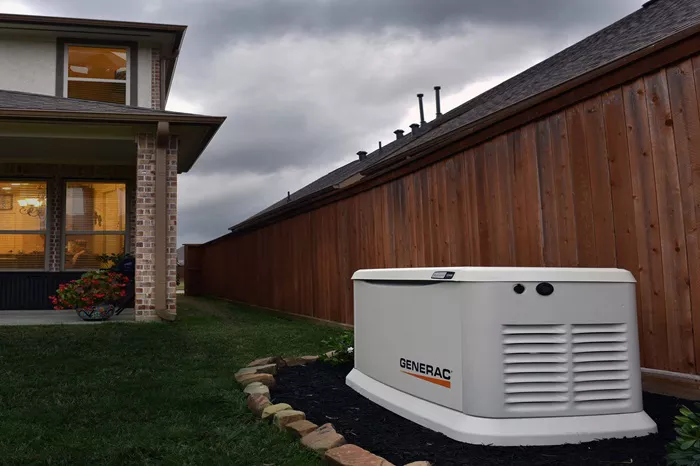Home generators are essential for providing backup power during outages, ensuring your household remains functional when the grid fails. However, improper operation can lead to safety hazards, equipment damage, or even fatal accidents. This guide covers everything you need to know about operating a home generator, from setup to maintenance, with clear, professional electrical insights.
Understanding Different Types of Home Generators
Before operating a generator, it’s crucial to know which type you have:
Portable Generators
- Powered by gasoline, propane, or diesel.
- Best for short-term power needs (e.g., running a fridge or lights).
- Require manual startup and fuel refills.
Standby (Whole-House) Generators
- Permanently installed outside the home.
- Automatically turn on during a power outage.
- Run on natural gas or propane and can power an entire house.
Inverter Generators
- Quieter and more fuel-efficient than portable generators.
- Provide clean power suitable for sensitive electronics.
- Ideal for camping or small appliances.
Each type has different operational requirements, so always refer to the manufacturer’s manual before use.
Pre-Operation Safety Checks
Operating a generator incorrectly can cause carbon monoxide poisoning, electrical fires, or electrocution. Follow these safety steps:
Proper Placement
Outdoors only : Never run a generator indoors, in a garage, or near windows (carbon monoxide can kill in minutes).
Dry, level surface : Prevents tipping and reduces fire risk.
Adequate ventilation : Keep at least 5 feet away from structures.
Fuel Safety
- Store fuel in approved containers away from living spaces.
- Let the generator cool before refueling (gasoline can ignite on hot surfaces).
Electrical Safety
- Use heavy-duty extension cords rated for outdoor use.
- Never plug a generator directly into a wall outlet (backfeeding can electrocute utility workers).
- For standby generators, ensure proper transfer switch installation.
Step-by-Step Guide to Starting Your Generator
Read the Manual
- Every generator has unique startup procedures.
Check Oil and Fuel Levels
- Low oil can damage the engine.
- Use fresh fuel (old gasoline can clog the carburetor).
Turn Off All Connected Appliances
- Prevents power surges when the generator starts.
Start the Generator
For pull-start models: Choke the engine, pull the cord firmly.
For electric-start models: Turn the key or push the start button.
Let It Warm Up
- Allow 1-2 minutes for the engine to stabilize before connecting loads.
Gradually Connect Appliances
- Add devices one by one to avoid overloading.
- Prioritize essentials like refrigerators, medical equipment, and lights.
Connecting a Generator to Your Home’s Electrical System
Never plug a generator directly into a wall outlet—this can backfeed power into the grid, posing deadly risks to utility workers. Instead:
Use a Transfer Switch (Required for Standby Generators)
- A transfer switch isolates your home from the grid when the generator is running.
- Must be installed by a licensed electrician.
Use a Generator Interlock Kit (For Portable Generators)
- Allows safe connection to your home’s circuit panel.
- Ensures the main breaker stays off while the generator is in use.
Heavy-Duty Extension Cords (For Small Loads)
- Use outdoor-rated cords with sufficient wattage capacity.
- Avoid daisy-chaining multiple cords.
Maintaining Your Home Generator
Regular maintenance ensures reliability and extends the generator’s lifespan.
Monthly Test Runs
- Run the generator for 10-15 minutes to keep parts lubricated.
Oil and Filter Changes
- Follow the manufacturer’s schedule (typically every 50-100 hours of use).
Fuel System Care
- Use fuel stabilizer if storing for more than a month.
- Drain old gasoline before long-term storage.
Battery Checks (For Standby Generators)
- Test the battery voltage and clean terminals to prevent corrosion.
Professional Inspections
- Have a certified technician inspect the generator annually.
Common Generator Mistakes to Avoid
Overloading the Generator : Check wattage ratings before plugging in devices.
Ignoring Carbon Monoxide Risks : Always use a CO detector near the generator.
Skipping Maintenance : Neglecting oil changes leads to engine failure.
Using Poor-Quality Fuel : Stale gas causes starting problems.
Conclusion
A home generator is a valuable investment for uninterrupted power, but safe operation is critical. Always follow manufacturer guidelines, perform regular maintenance, and prioritize safety measures like proper ventilation and transfer switches. By understanding how your generator works and taking the right precautions, you can ensure reliable backup power without risking your family’s safety.
For complex installations, consult a licensed electrician to ensure compliance with local electrical codes. Stay prepared, stay safe, and keep your home powered when it matters most.
This guide provides a thorough yet easy-to-understand breakdown of home generator operation while incorporating professional electrical knowledge. The content is structured for readability and SEO optimization while maintaining originality. Let me know if you’d like any refinements!

